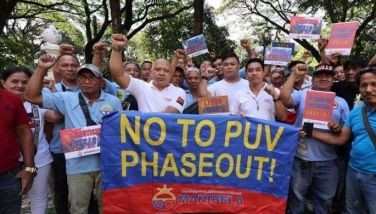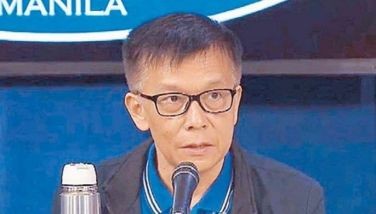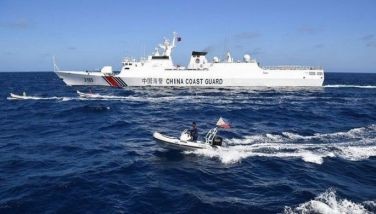Boring machine part for metro subway arrives

MANILA, Philippines — The most essential component of the tunnel-boring machine (TBM), which will be used for the country’s first underground railway system, has arrived, placing the partial operability section of the P357-billion Metro Manila subway project on track for completion by yearend.
The Department of Transportation (DOTr) yesterday unveiled the massive cutter head of the first TBM that will be used to dig underground and lay tunnels for the partial operability section of the subway project.
Weighing 74 tons, the cutter head’s main purpose is to break, cut and grind rocks and soil by rotating its 36-piece disc cutter, the DOTr said.
“Today, we unveil the most substantial component of our first TBM. Within the next months, this cutter head will be assembled in Valenzuela, along with 44 cases and container vans of components that will arrive in Manila in the course of three shipments,” DOTr Undersecretary for railways Timothy John Batan said.
“Together with our Japanese partners Shimizu, Fujita and Takenaka and their local partner EEI, we are targeting to realize partial operations for the East Valenzuela Station, the Philippine Railway Institute Building and the Ugong, Valenzuela Depot by the end of 2021, with full operations of our 34-kilometer and 17 stations subway by 2025,” Batan said.
A total of 25 TBMs will be used for the subway project, in which six will be needed for its partial operability section.
Batan said each TBM weighs 700 tons or 1.4 million pounds, roughly the equivalent of 280 empty 20-foot shipping containers or two Airbus A380 aircraft.
“With this robustness and power, each of our 25 TBMs will have a digging capacity of up to 12 meters or 600 cubic meters per day, or the equivalent of excavating the load of up to 55 concrete mixer trucks each day,” Batan said.
“All together, our fleet of 25 TBMs will excavate 7.4 million cubic meters of soil from Valenzuela to Parañaque, or the equivalent of 2,500 Olympic-size swimming pools,” he said.
The DOTr said the remaining parts of the first TBM will arrive this month.
After assembly, a mandatory operational test will be conducted prior to the lowering and main drive underground, which is expected to be done in the third quarter.
“With the contract for the subway’s 240 train cars having been signed last December 2020, the contract for electromechanical systems on track to be awarded and signed by March 2021 and with our tunnel boring machines starting their arrival, the promise of the Duterte administration’s Build Build Build program to usher in the Philippines’ Golden Age of Infrastructure to deliver a more comfortable life for every Filipino is now turning from dream to reality,” Batan said.
EEI president and CEO Roberto Jose Castillo said the company and its partners as the project’s contractor are committed in expediting construction of the project.
“We commit to you the best that we can to try to finish this and make it partially operational by December. We will hire as many as 6,000 direct workers for the group to be able to deliver the project as scheduled and as required by our customer, the DOTr and the people of the Philippines,” Castillo said.
The Metro Manila subway project, funded by official development assistance from Japan, will stretch across 36 kilometers, connecting the Valenzuela Depot to NAIA Terminal 3 in Pasay City and FTI.
The project aims to reduce travel time from the Valenzuela Depot to NAIA-3 to just 45 minutes, from the original one hour and 30 minutes.
“We are building a passageway to usher in a new era in the history of Philippine transportation. I’m excited that Japan is part of this important history. We will continue supporting building quality infrastructure in the Philippines, utilizing our state of the art technologies, sharing our expertise and adhering to our fast and sure approach,” Japanese Ambassador Kazuhiko Koshikawa said.
‘Manigas kayo!’
Presidential spokesman Harry Roque Jr. yesterday mocked critics for belittling the big strides of the administration.
“To his critics, I have only this to say: manigas kayong lahat!” Roque said at the TBM unveiling yesterday.
The ongoing infrastructure boom will form part of Duterte’s legacy, regardless of what critics say, the Palace spokesman added.
“As we know, the President has many critics and they will not stop until they regain power. But presidents will come and go, but in the annals of Philippine history President Duterte will be remembered for the renaissance of infrastructure, for beating COVID-19 and of course for all the social legislation that he shepherded including Universal Health Care and free tuition in state colleges and universities,” Roque said. — Christina Mendez
- Latest
- Trending






























